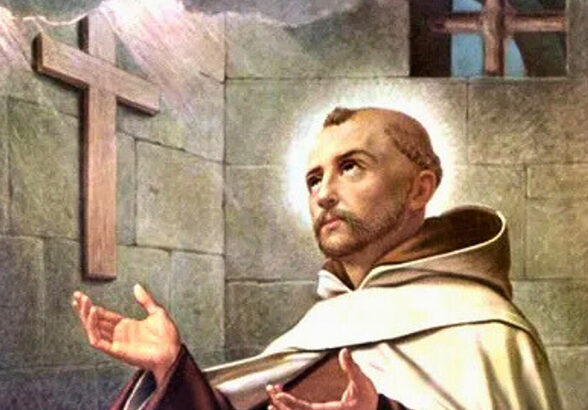The religious life and spirituality of the Carmel were clear and defining calls in the life of St John of the Cross. At eighteen, after finishing his studies in rhetoric and classical languages with the Jesuits in Medina del Campo, Ávila, Spain, he started his journey into the Carmelite order in 1563. Shortly afterwards, he met Teresa of Ávila, an encounter that changed both their lives.
At the time, John had already been ordained, and he was deeply inspired by Teresa’s vision for reforming the Carmelite order, including its male branch. They worked together to put into practise their shared ideas, and, in 1568, they established the first house of the Discalced Carmelites in Duruelo, Ávila. This marked the foundation of the first reformed men’s community within the order. It was during this period that John adopted the name ‘of the Cross’, by which he would be known ever after.
By the end of 1572, at Teresa’s request, John became her confessor and vicar at the Monastery of the Incarnation in Ávila, where she served as prioress. However, their reform efforts faced significant opposition. John endured persecution and was even imprisoned due to unjust accusations. Despite his suffering, he escaped with the help of Teresa. After regaining his strength, he resumed his mission, even as he faced several trials.
John’s life was marked by a strong suffering, including a long illness towards the end. He passed away in December 1591 at a convent near Jaén, Andalusia, during the early morning prayer of Lauds. His final words were, “Today I am going to sing the Office in Heaven.” His body was later moved to Segovia.
John was beatified by Pope Clement X in 1675 and canonised by Pope Benedict XIII in 1726. Known as the “Saint of the purification of the soul,” he accepted his trials with humility and faith. It was during his most difficult moments, including his imprisonment, that he composed some of his deepest spiritual works.
Pope Benedict XVI described him as “one of the most important lyrical poets of Spanish literature,” emphasising his doctrine as a guide to sanctity. The Spanish saint imagine the path to holiness as climbing a mountain which the man must face with courage and patience.


 Renata Milán Morales
Renata Milán Morales St John of the Cross
St John of the Cross